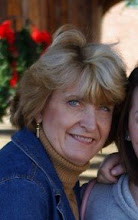As we left the castle, we went to the section of Krakow that was sectioned off as a ghetto. The pictures you see are of the memorial in the square in the ghetto. You can see chairs in rows and that is all. It reminds me of the Oklahoma bombing memorial. The ideas of the chairs were chosen from a survivor of the ghetto who saw a group of

children carrying chairs. When asked what they were doing,

they replied that they had to leave their school and they were bringing the chairs so they would have a place to sit in their new school. Needless to say those children didn't survive. What would these children have brought to our world had they lived? What did we lose with those children. The Krakow ghetto was used as a supply of labor for factories that were established in and outside of the ghetto. One of the factories was the one run by Oscar Schindler. More pictures of that the next post
This is also a transportation depot so people use the chairs as they are waiting for their buses and and trams. This is ironic because streetcars would travel through the ghetto all the time, yet they were never allowed to make a stop.
As a teacher, I wonder how my students would respond in relationship to the threat of their schooling being cut off.



 . This is Oskar Schindler's factory and this is the place where Schindler's list was film. The factory is under renovations which prohibited us from entering it. Schindlers Jews were workers who were place in the care of Schindler by the Nazis.
. This is Oskar Schindler's factory and this is the place where Schindler's list was film. The factory is under renovations which prohibited us from entering it. Schindlers Jews were workers who were place in the care of Schindler by the Nazis. 








































